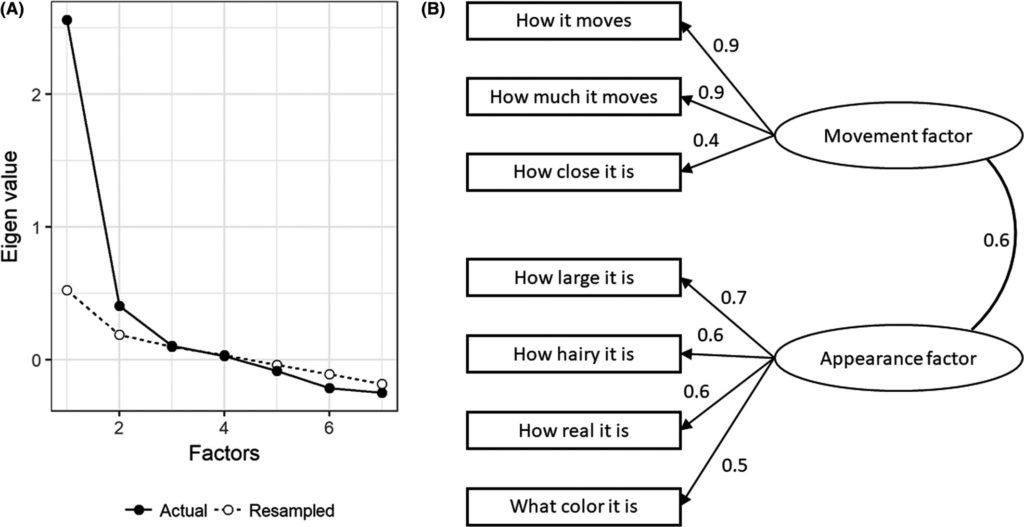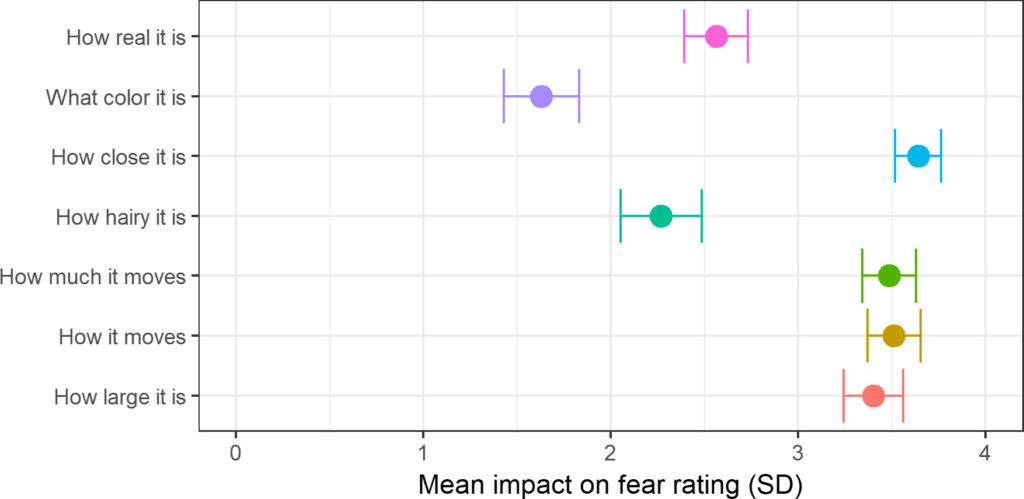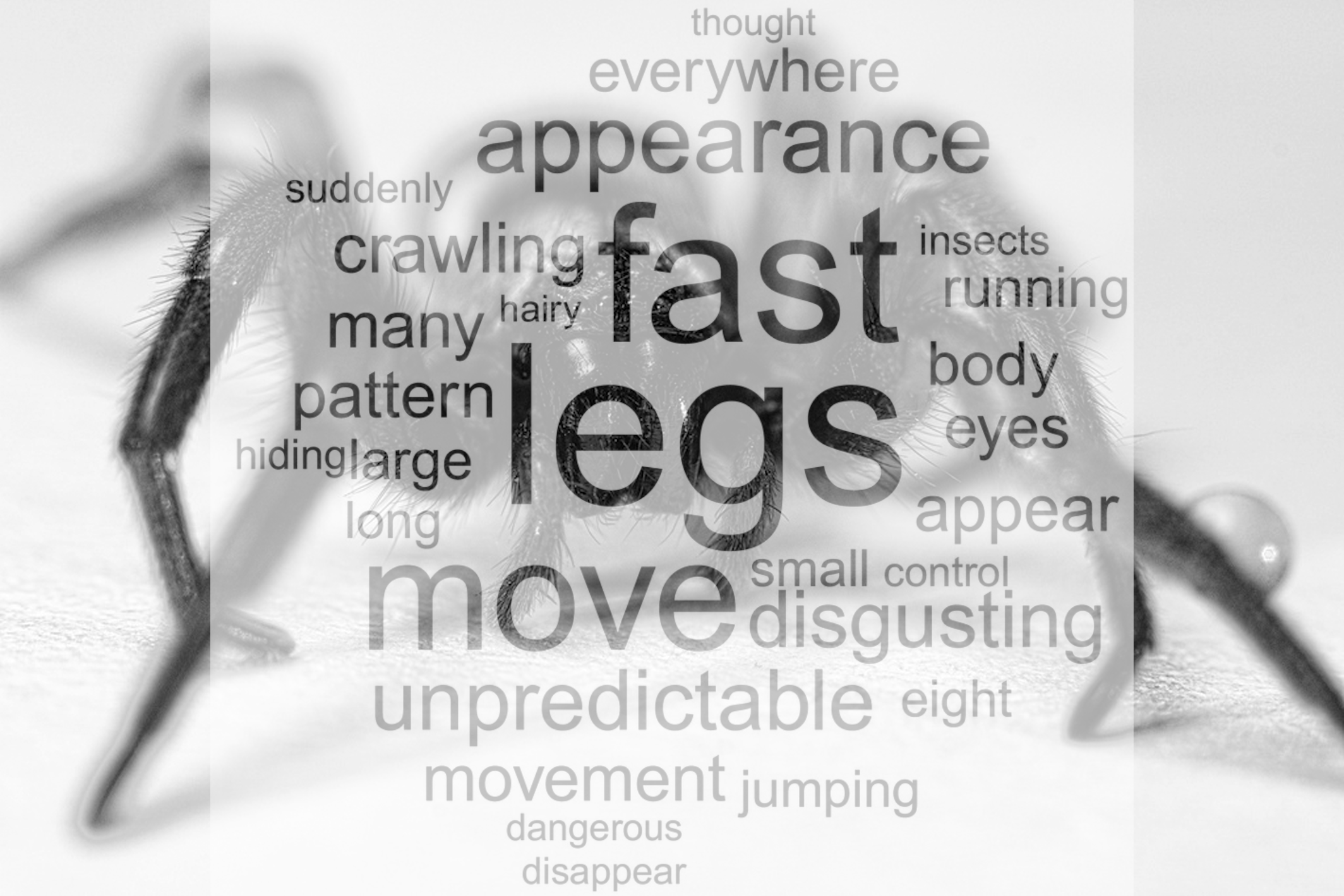Spider phobia is a common and impairing mental disorder, yet little is known about what characteristics of spiders that spider phobic individuals find frightening. Using screening data from a clinical trial, we explored which characteristics that spider‐fearful individuals (n = 194) rated as having the greatest impact on fear, used factor analysis to group specific characteristics, and explored linear associations with self‐reported phobia symptoms. Second, a guided text‐mining approach was used to extract the most common words in free‐text responses to the question:
“What is it about spiders that you find frightening?”
Both analysis types suggested that movement‐related characteristics of spiders were the most important, followed by appearance characteristics. There were, however, no linear associations with degree of phobia symptoms. Our findings reveal the importance of targeting movement‐related fears in in‐vivo exposure therapy for spider phobia and using realistically animated spider stimuli in computer‐based experimental paradigms and clinical interventions such as Virtual Reality exposure therapy.

Factor solution. (A) Parallel analysis scree plot to determine factor solution; (B) Factor loadings.

Movement‐related aspects, along with size, were rated the highest, while color, hairiness, and degree of realness were scored markedly lower.
Read the full paper:
Lindner, P., Miloff, A., Reuterskiöld, L., Andersson, G. & Carlbring P. (2019). What is so frightening about spiders? Self-rated and self-disclosed impact of different characteristics and associations with phobia symptoms. Scandinavian Journal of Psychology, 60(1), 1-6. doi:10.1111/sjop.12508

Photo credit: Richard Pigott (spider) and Philip Lindner (the words), Per Carlbring (mashup)

